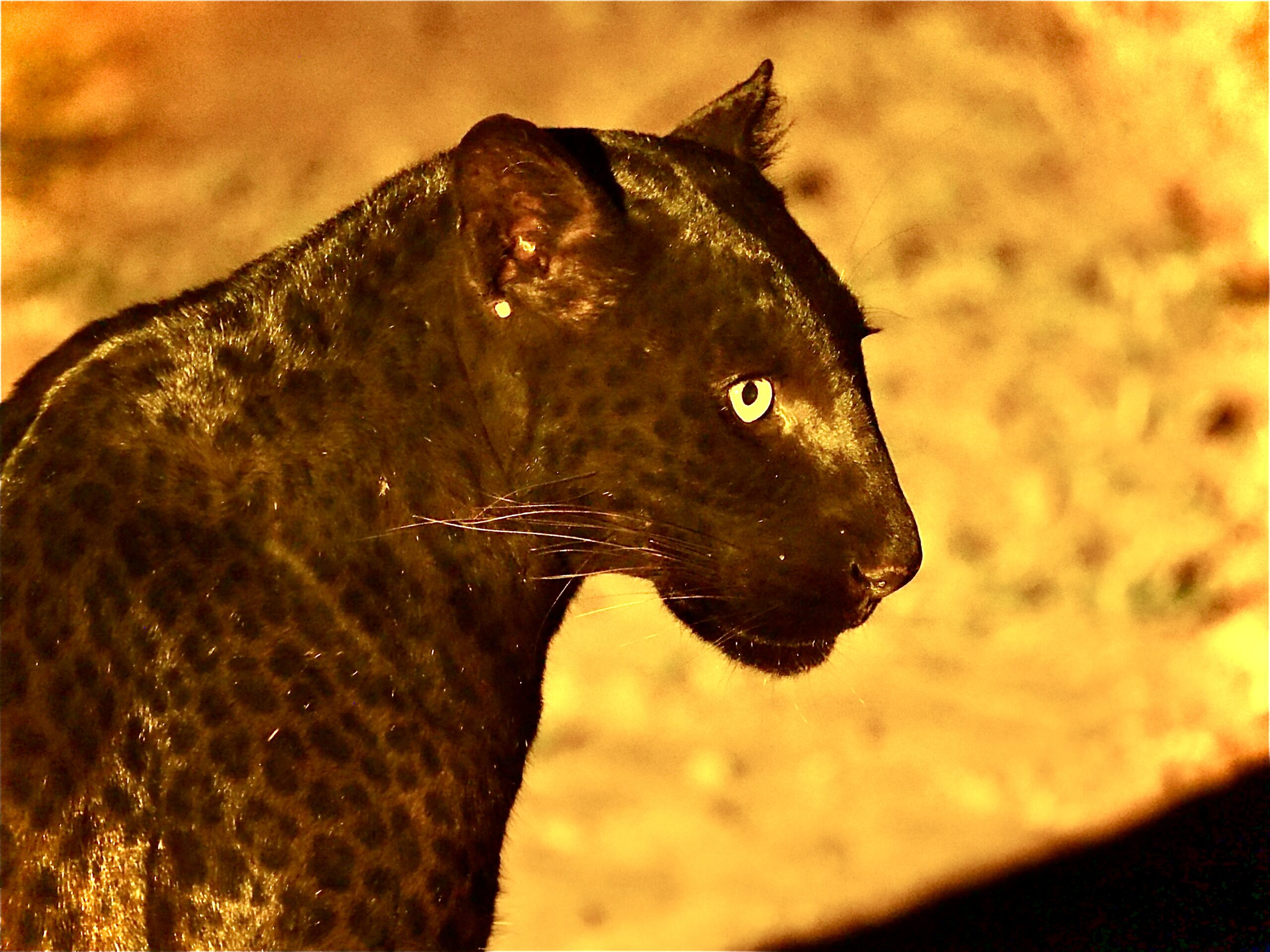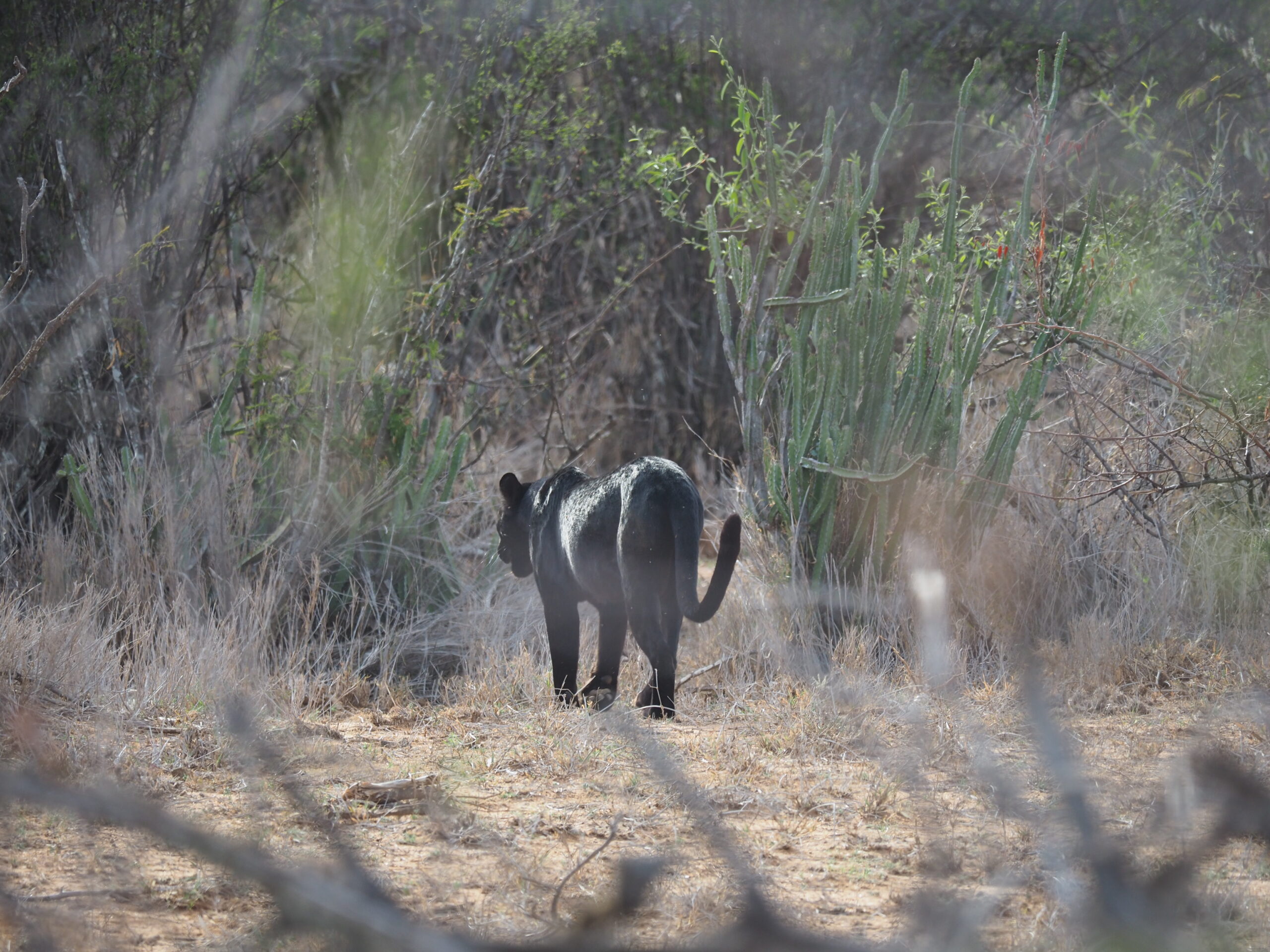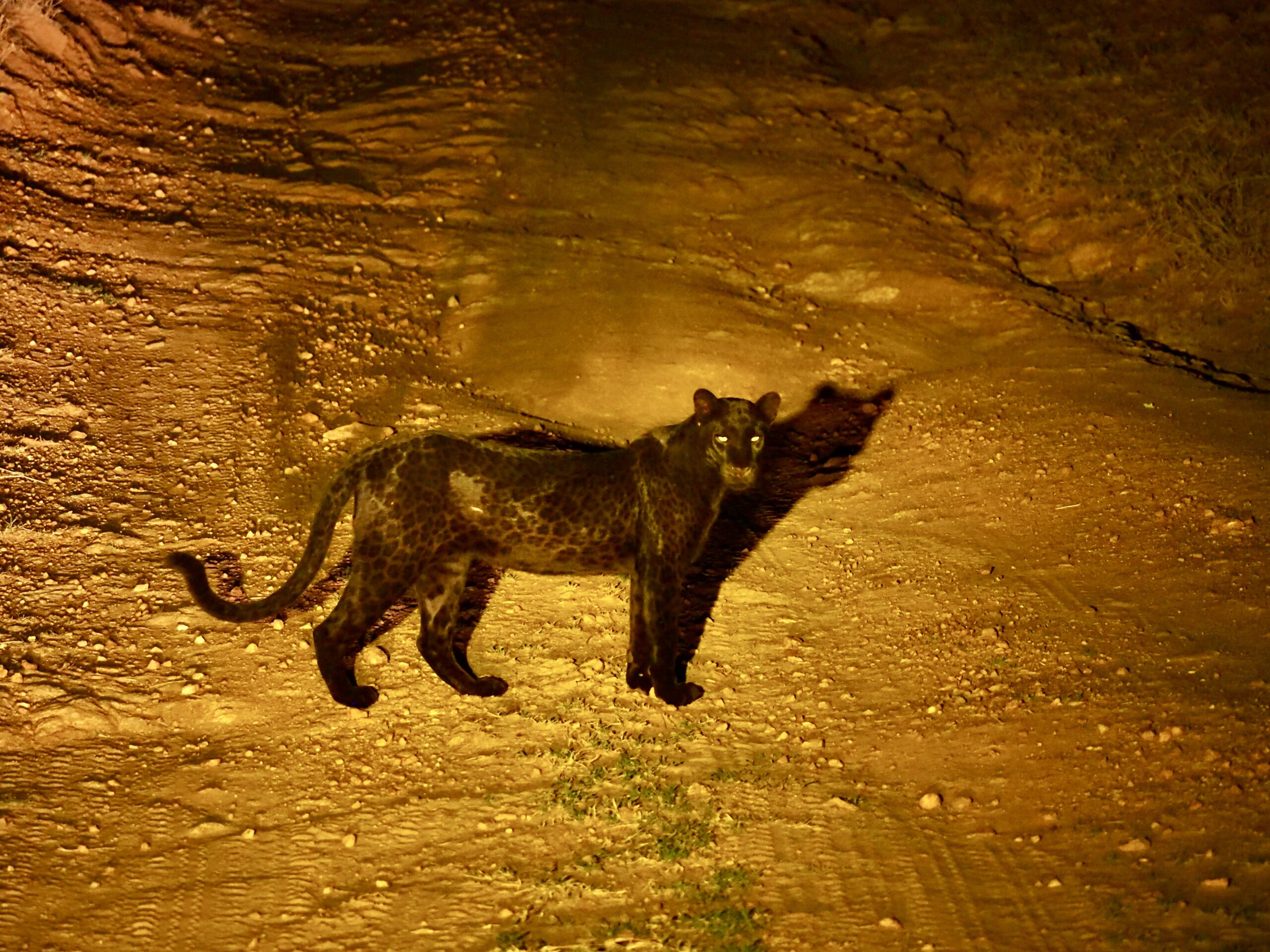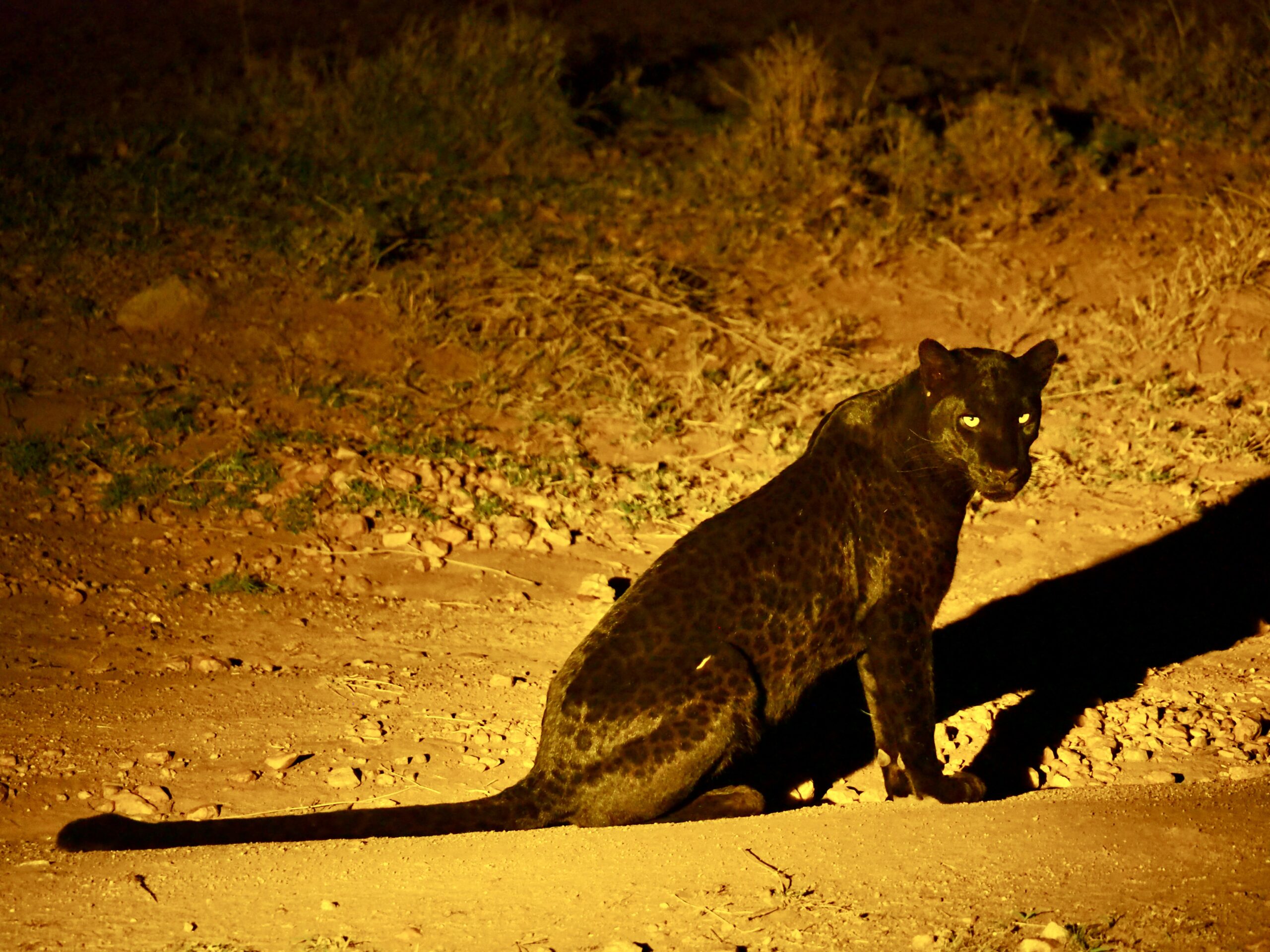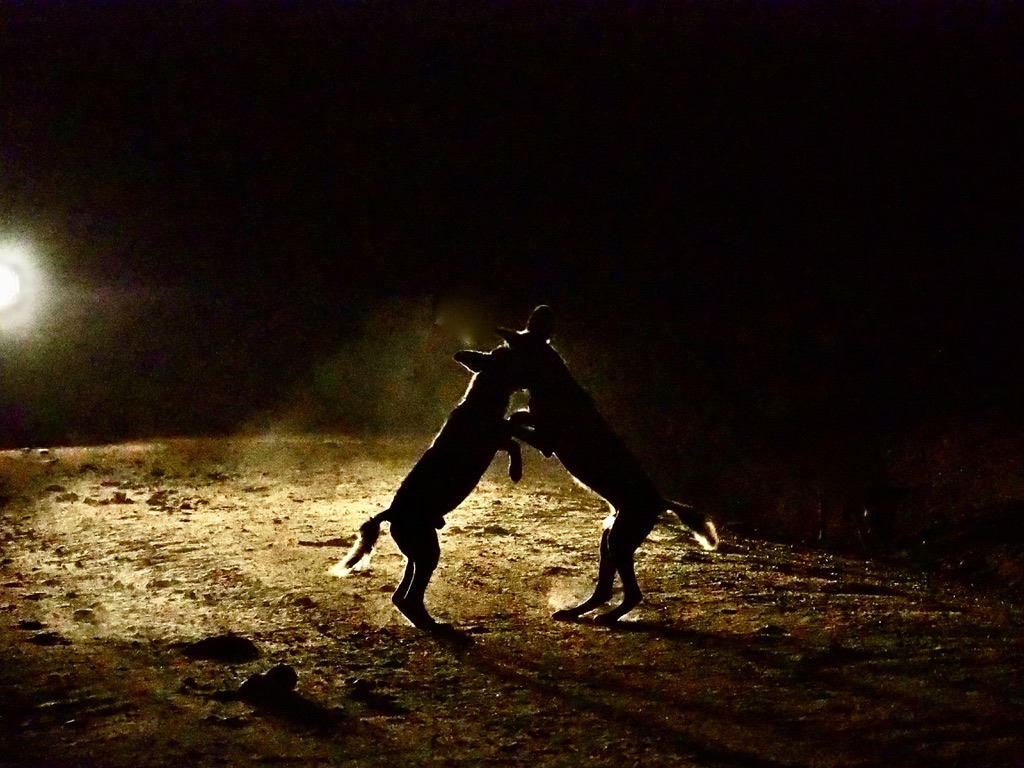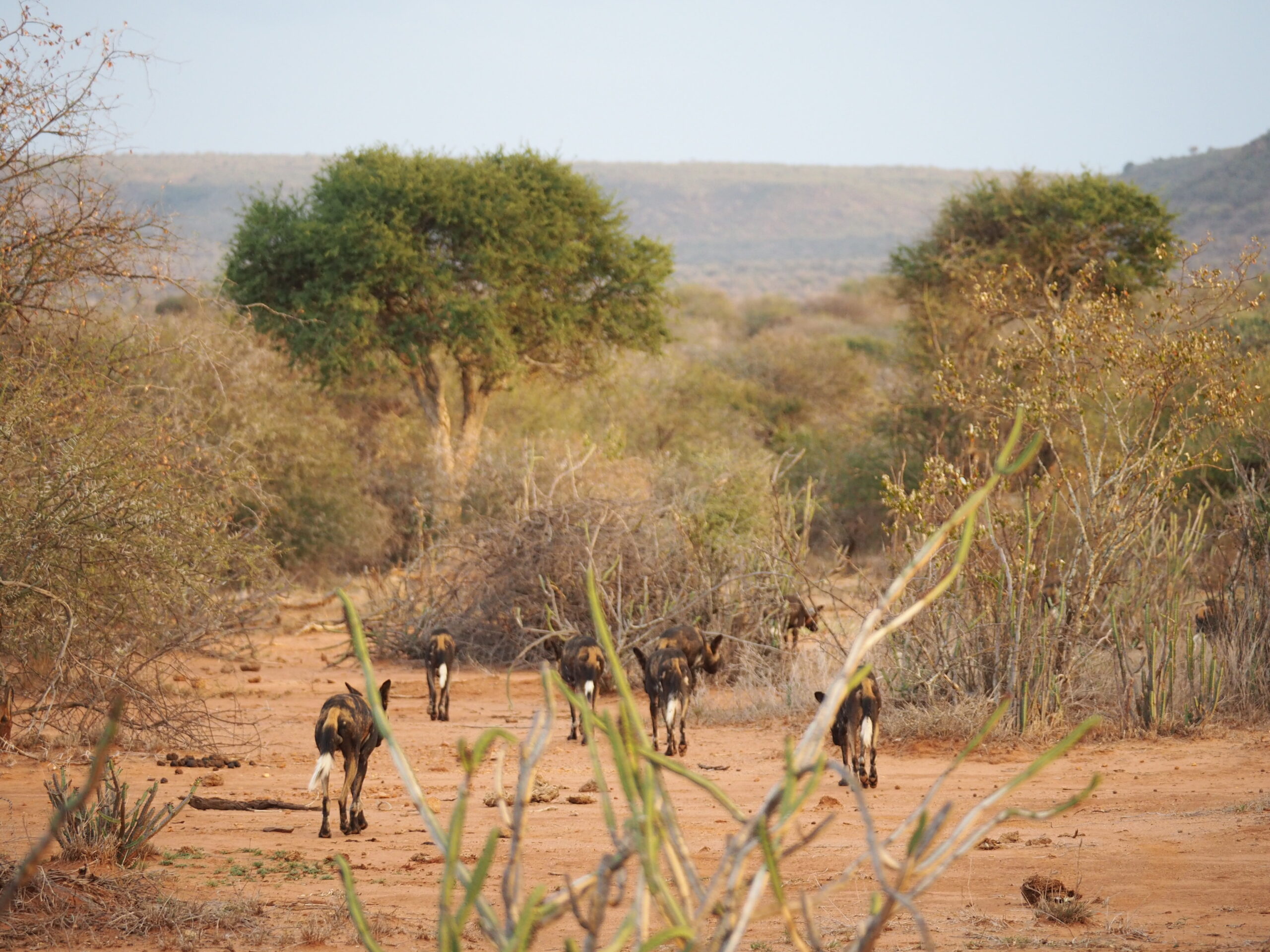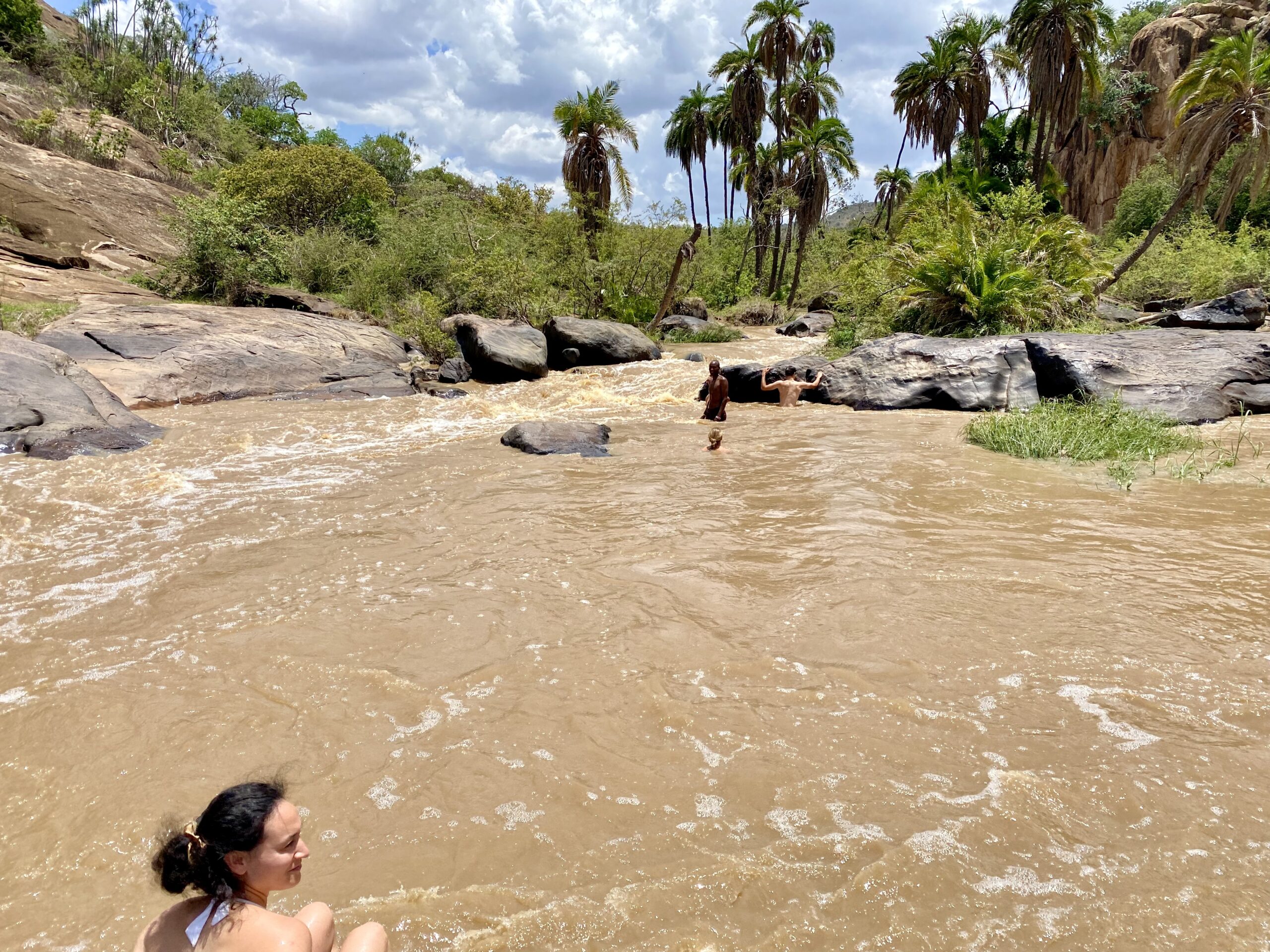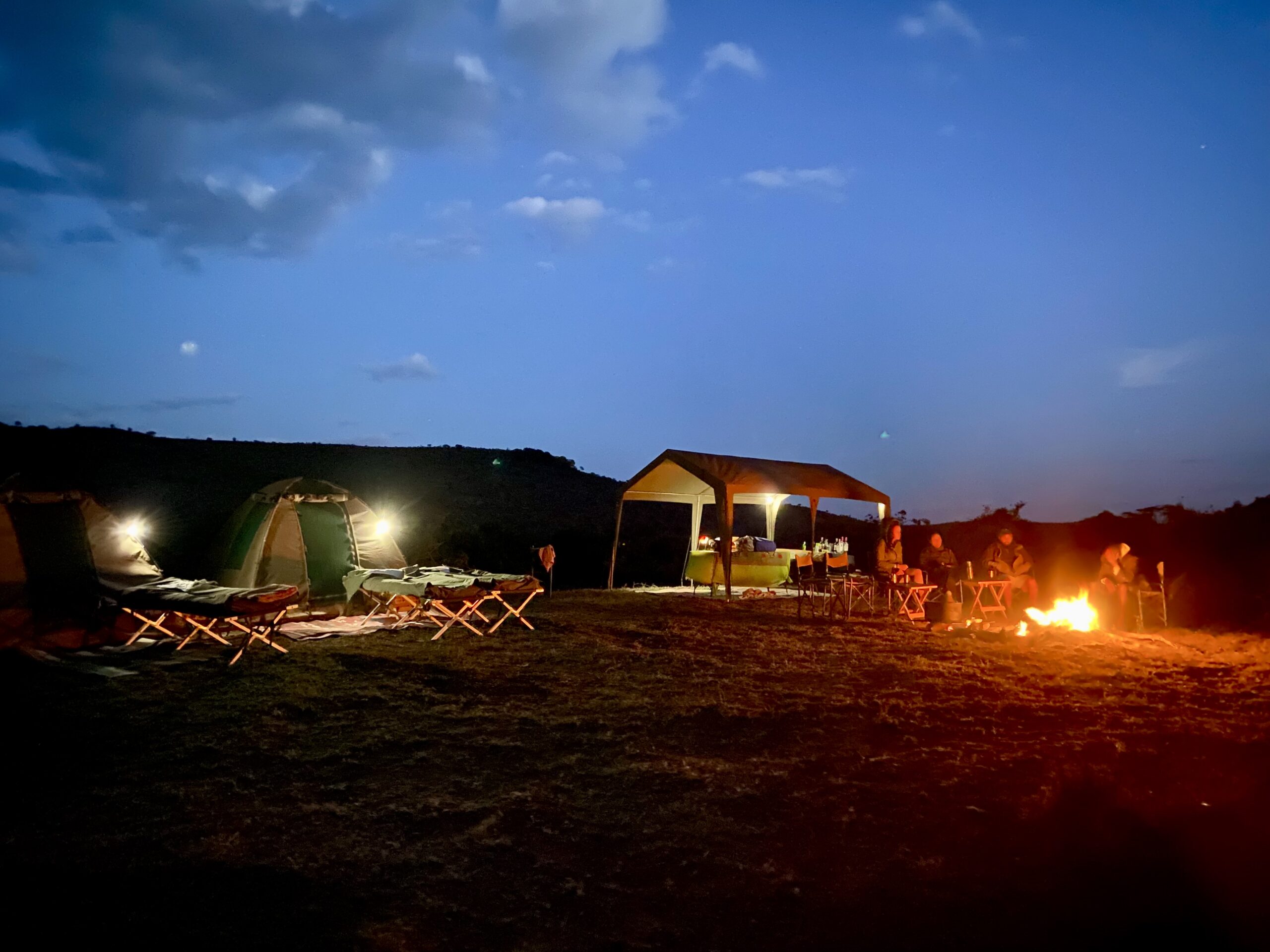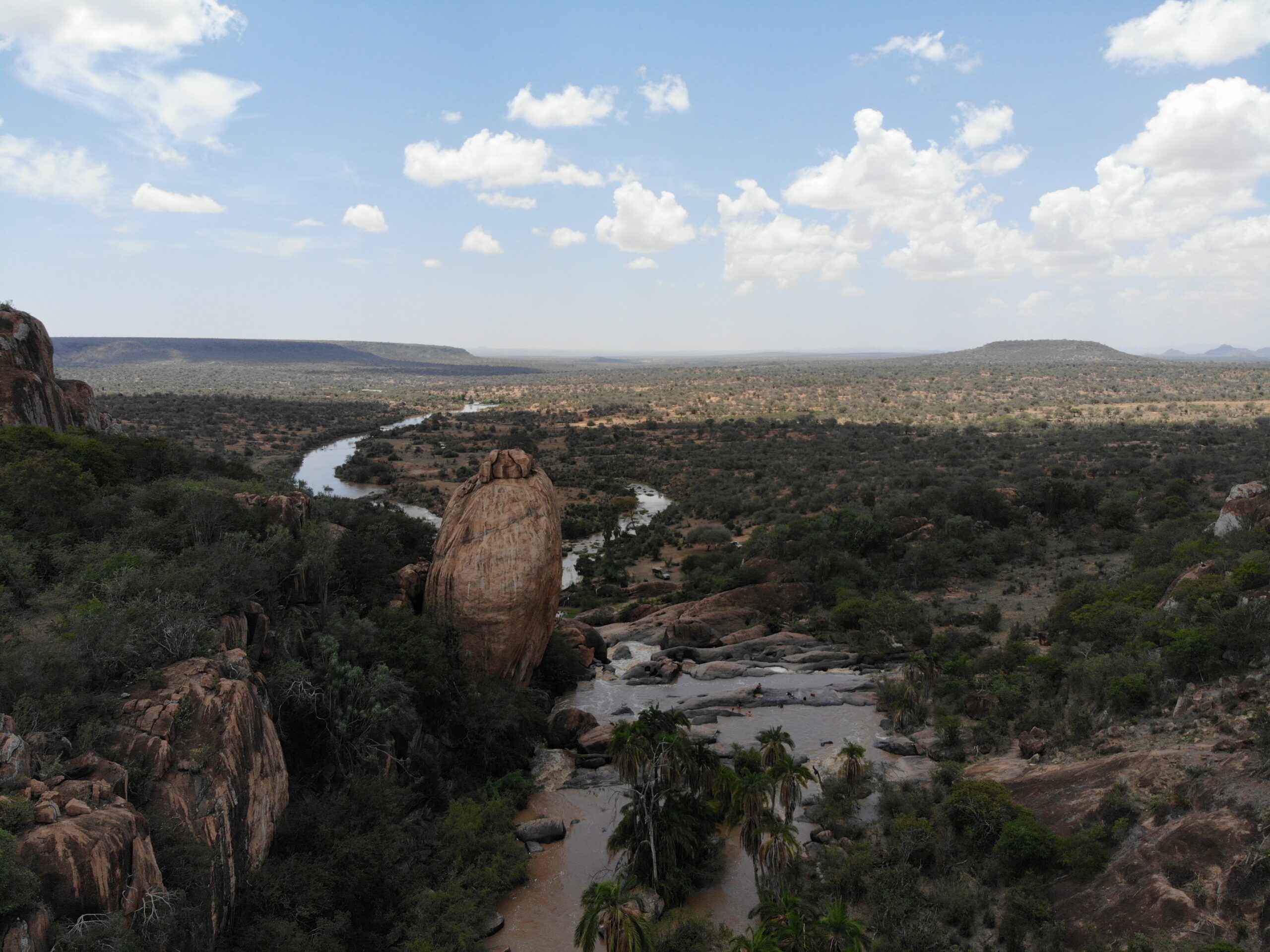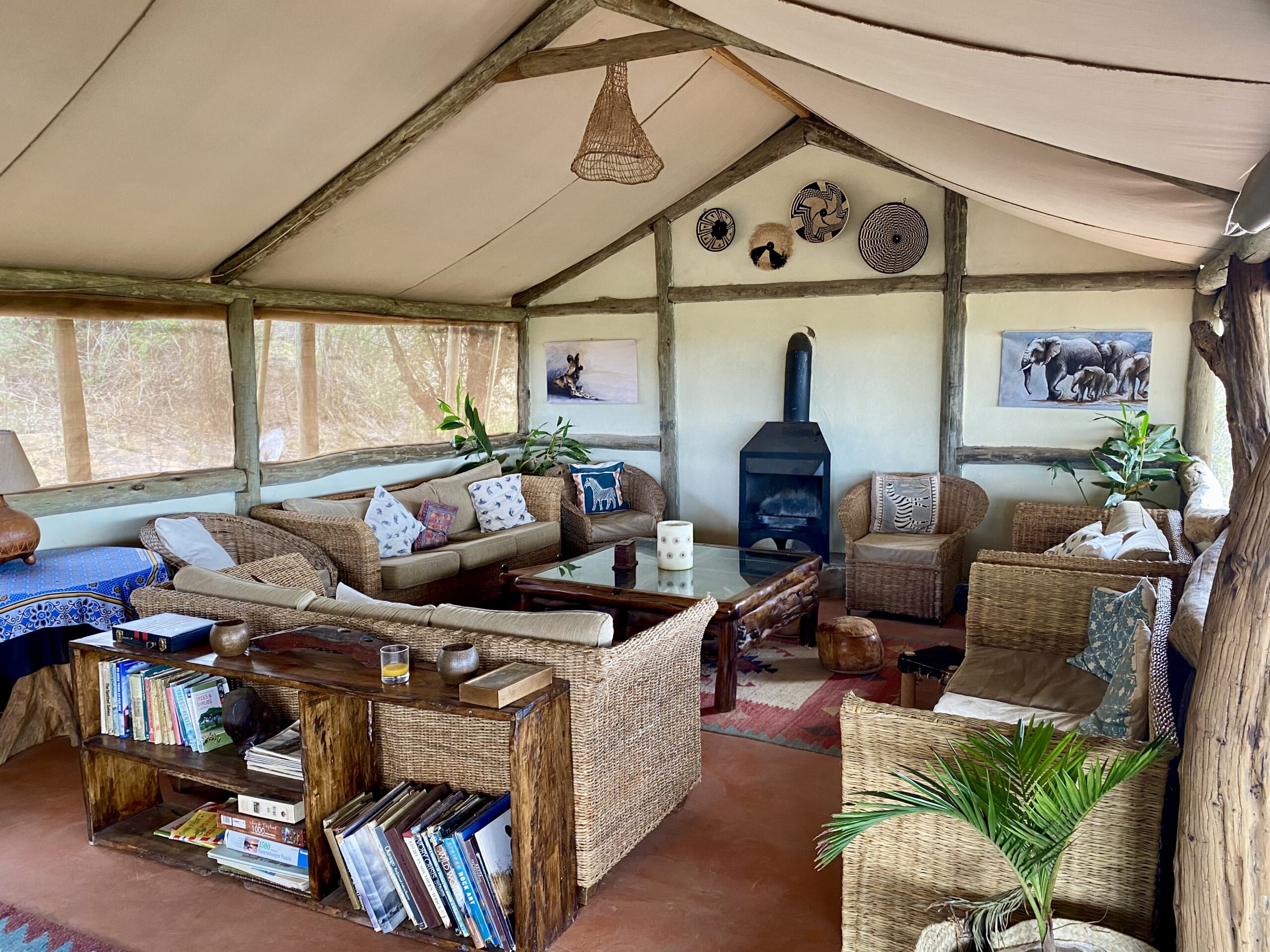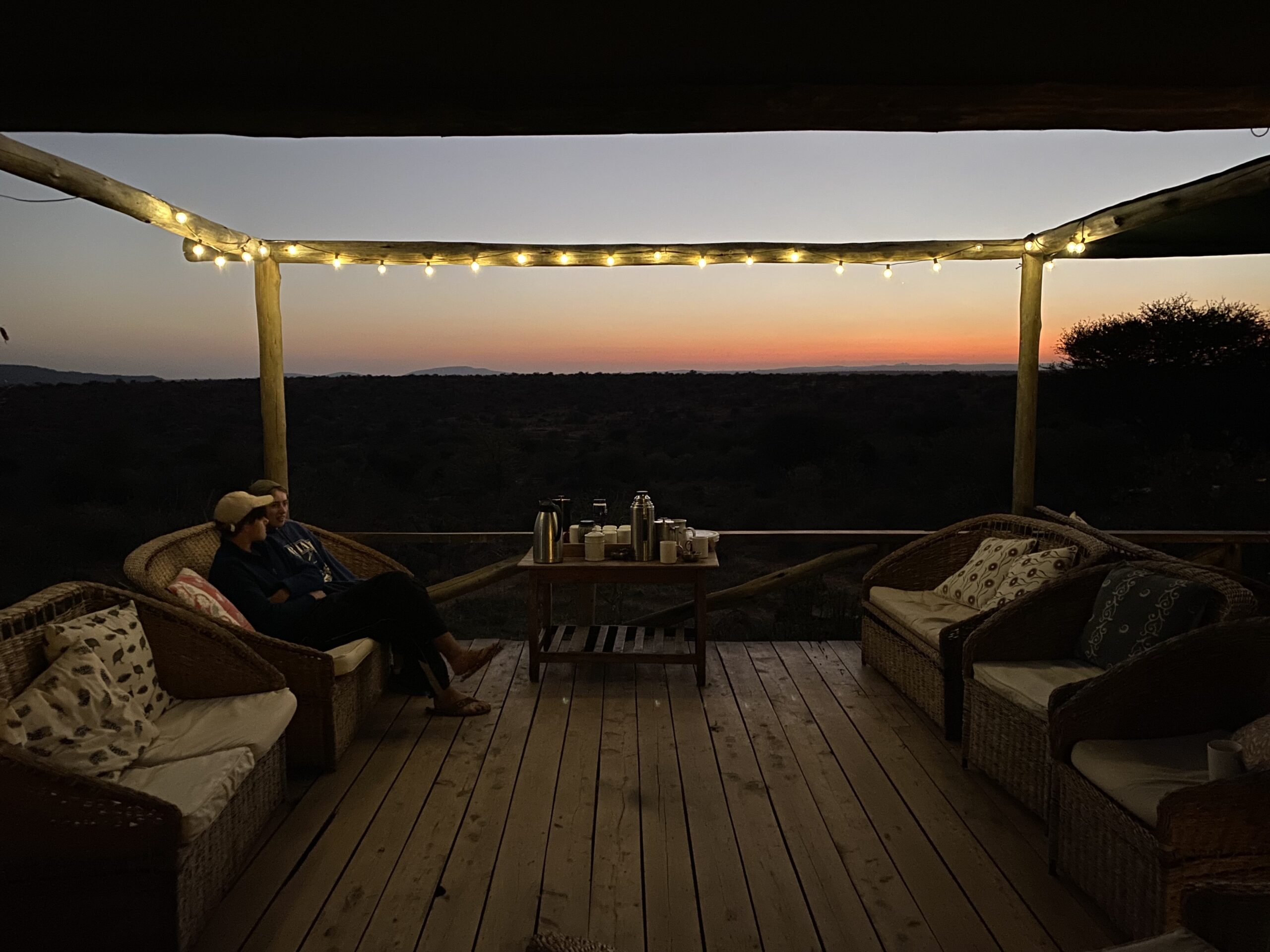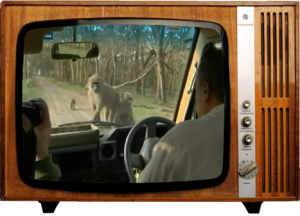Chasing Shadows in Laikipia – The Melanistic Leopard of Ol Doinyo Lemboro Ranch
The relatively recent emergence of a Black Leopard in Laikipia, Kenya has wildlife photographers and the social media world dizzy with excitement. In September, we travelled up to Laikipia to search for the majestic beast for ourselves!
What is a Black Leopard and what’s the big deal?
Melanistic leopards, sometimes referred to as Panthers, are a genetic anomaly where the cat has excess black pigment in its skin. On close inspection, the typical rosettes can be seen but to the eye, the cat has a beautiful black coat.
While visually stunning, the Leopard’s black coat is somewhat of a hindrance in the open Savannah as it stands out against the greens & light browns of the vegetation, especially at night when they hunt. This could, in part, be why so few Black Leopards are seen, as the majority may not survive to adulthood. It is estimated that roughly 10% of Leopards are melanistic. That means that out of a total Leopard population of around 700,000 in Africa, approximately 70,000 melanistic Leopards should exist.
However, this number is greatly contested, with recorded Black Leopard numbers varying between 10-20 in the whole of Africa! One reason that so few have been seen in Africa is that the black coat is more suited to jungles and forests, where game viewing is much harder. South America and Asia have had more recorded viewings, arguably because the dense jungle is more suitable for the animals, but the number of actual recorded numbers still raises questions about the 10% estimation.
Regardless of how many actually exist, I think most can agree that they are rare, majestic and certainly not your run-of-the-mill safari sighting.
Where can I see a Black Leopard myself?
For some reason, Laikipia in Northern Kenya appears to have a relative abundance of Black Leopards with approximately 8 cats having been seen over the past few years. Until now, sightings of these cats have been few and far between but recently a young cub was born in the Ol Doinyo conservancy in Laikipia, and she has been spotted a number of times over the recent months.
The beautiful cat, which some have aptly named Giza, meaning “shadow” in Kiswahili, has made her home near a camp called Laikipia Wilderness Camp, in Northern Kenya. Giza was around 20 months old when I saw her and still living in the same territory as her mother, a regular coated Leopard.
As Giza approaches adulthood, she may be forced to find her own territory, but for the next few months at least, mother and daughter seem happy sharing the area together. Interestingly, the team at the camp has noticed that the mother is benefiting from having her daughter around when hunting. She often follows Giza while hunting and ambushes Prey as they flee from Giza. Possibly some sort of Leopard coalition forming?
About Ol Doinyo Lemboro Ranch and Laikipia Wilderness Camp
Aside from the Black Leopard, Ol Doinyo and Laikipia Wilderness Camp is well known for specializing in family and adventure safaris. It is also blessed to have a growing pack of Wild Dogs that pass through the conservancy from time to time.
The Conservancy is incredibly stunning with Ewaso Narok river, valleys, kopjes, and waterfalls. Being a conservancy, guests have the freedom to enjoy a number of different activities which include bush walks, fly camping under the stars, swimming in nearby rivers and waterfalls, Wild Dog tracking, bush meals, fishing, day & night game drives, and more.
The camp itself offers an authentic and classic take on safari. Meals at the camp are often held in the main mess building with all guests eating together and accompanied by Steve, the owner. The close-knit family feel is enjoyable and guests have the chance to hear exciting stories from the owner and team and feel part of the family while staying at the camp.
The six tented rooms are spacious and well-spaced apart but fairly rustic. While not the most luxurious camp in East Africa, it is certainly very comfortable and boasts excellent guides, exceptional wildlife, delicious food, and friendly staff.
We would recommend the camp for families, those that enjoy active safaris, photography enthusiasts, and of course, those hoping to see the mystical and majestic Black Leopard and Wild Dogs. Naturally, wildlife sightings can never be guaranteed, and the Wild Dogs in particular can disappear for months at a time from the area. However, over a 4-night stay, we were able to see the Wild Dogs twice and the Black Leopard four times, plus a huge amount of different and amazing wildlife experiences. But it was about more than just the wildlife – the bush walks, fly camping, swimming in the rivers and waterfall all made it a fantastic experience.
We can advise further on the best time to visit and whether the camp would be suitable for your group. For more information or to book your next dream East African adventure, you can reach out to us through info@africahousesafaris.com or through any of our social channels.
Nature meets nostalgia at Sand River
When we heard last year that a new tented camp was opening in the Masai Mara, we were curious as to what it would be like. When we found out it was a luxury 1920s-inspired camp on the stunning Sand River built by boutique accommodation experts The Elewana Collection, we had to go and see it for ourselves…
Solio so good
At its finer end, East African tourism has developed a tendency over recent years to deliver something extraordinary – which is to combine world-class accommodation and magnificent settings with a genuine ethical purpose. One leading in this new class of tourist destination is Solio, a lodge and conservancy in Kenya which we were thrilled to visit for ourselves a few weeks ago…

Get our e-newsletters
Africa House Ltd, P.O. Box 1751, Nairobi, 00502 | T: +254 (0) 722 512 588 | E: info@africahousesafaris.com |© 2025 Africa House Safaris. All rights reserved.

